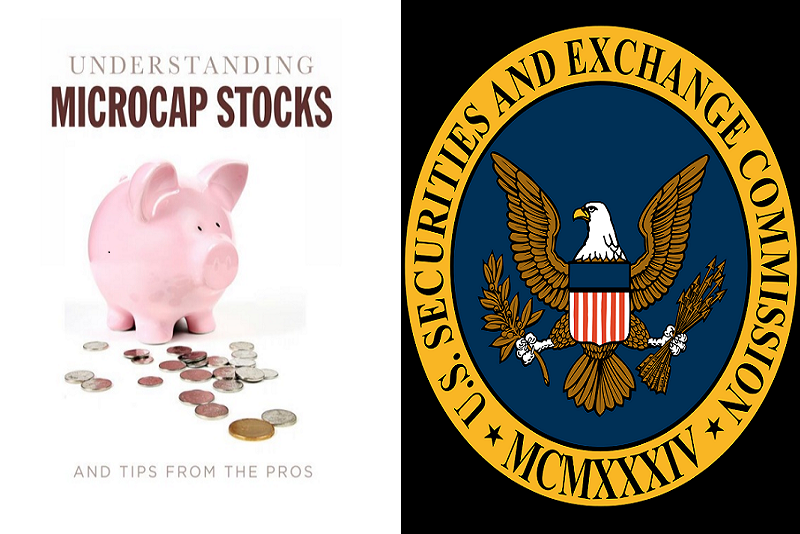BROWSE BY TOPIC
- Bad Brokers
- Compliance Concepts
- Investor Protection
- Investments - Unsuitable
- Investments - Strategies
- Investments - Private
- Features/Scandals
- Companies
- Technology/Internet
- Rules & Regulations
- Crimes
- Investments
- Bad Advisors
- Boiler Rooms
- Hirings/Transitions
- Terminations/Cost Cutting
- Regulators
- Wall Street News
- General News
- Donald Trump & Co.
- Lawsuits/Arbitrations
- Regulatory Sanctions
- Big Banks
- People
TRENDING TAGS
Stories of Interest
- Sarah ten Siethoff is New Associate Director of SEC Investment Management Rulemaking Office
- Catherine Keating Appointed CEO of BNY Mellon Wealth Management
- Credit Suisse to Pay $47Mn to Resolve DOJ Asia Probe
- SEC Chair Clayton Goes 'Hat in Hand' Before Congress on 2019 Budget Request
- SEC's Opening Remarks to the Elder Justice Coordinating Council
- Massachusetts Jury Convicts CA Attorney of Securities Fraud
- Deutsche Bank Says 3 Senior Investment Bankers to Leave Firm
- World’s Biggest Hedge Fund Reportedly ‘Bearish On Financial Assets’
- SEC Fines Constant Contact, Popular Email Marketer, for Overstating Subscriber Numbers
- SocGen Agrees to Pay $1.3 Billion to End Libya, Libor Probes
- Cryptocurrency Exchange Bitfinex Briefly Halts Trading After Cyber Attack
- SEC Names Valerie Szczepanik Senior Advisor for Digital Assets and Innovation
- SEC Modernizes Delivery of Fund Reports, Seeks Public Feedback on Improving Fund Disclosure
- NYSE Says SEC Plan to Limit Exchange Rebates Would Hurt Investors
- Deutsche Bank faces another challenge with Fed stress test
- Former JPMorgan Broker Files racial discrimination suit against company
- $3.3Mn Winning Bid for Lunch with Warren Buffett
- Julie Erhardt is SEC's New Acting Chief Risk Officer
- Chyhe Becker is SEC's New Acting Chief Economist, Acting Director of Economic and Risk Analysis Division
- Getting a Handle on Virtual Currencies - FINRA
ABOUT FINANCIALISH
We seek to provide information, insights and direction that may enable the Financial Community to effectively and efficiently operate in a regulatory risk-free environment by curating content from all over the web.
Stay Informed with the latest fanancialish news.
SUBSCRIBE FOR
NEWSLETTERS & ALERTS
Putting a $300,000 Price Tag on This Broker-Dealer’s WSPs
by Howard Haykin
Given the firm’s involvement with microcap stocks, the firm considered the improper sale of unregistered securities to be a primary and significant AML risk. So, to address that concern, (and to its credit) …
- The firm created a ‘robust securities vetting program’ for verifying that physical penny stock certificates deposited at the firm are either registered or appropriately exempt from registration. Once those certificates were cleared for deposit, the firm believed that customers were free to liquidate the shares and wire funds to their own bank accounts largely without further inquiry for AML purposes.
- The firm delegated its President/AML Officer/CCO with responsibility for vetting all stock deposits for registration (or an appropriate exemption) before any stock can be sold; additionally he was responsible for responding to regulatory requests and for conducting internal AML investigations.
- [NOTE: FINRA issued a $140K fine and a 1-year suspension against the President/AML Officer/CCO; however, those sanctions are pending while the respondent appeals FINRA’s findings.]
- The firm required all employees to promptly report to the AML Officer any known or suspected money laundering or other financial violations of AML policies as well as other suspected violations or crimes.
- The firm’s AML policies and procedures specifically identified various red flags or risk indicators that may suggest suspicious activity, including, the following:
- Customer transactions include a pattern of receiving stock in physical form or the incoming transfer of shares, selling the position and wiring the proceeds.
WHAT WENT WRONG. APPARENTLY, ANYTHING AND EVERYTHING.
Quite simply, here’s the way that the SEC explained how the Firm Failed to Review Red Flags:
► Although [the B/D’s] WSPs identify suspicious activity, list red flags, and describe [the B/D’s] responsibility to file SARs, [the B/D] failed to adequately conduct AML reviews and to identify, investigate, and report certain suspicious activity related to transactions or patterns of transactions in its customers’ accounts. Accordingly, [the B/D] failed to file necessary SARs.
► [The B/D’s] primary business involves receiving stock in physical form, selling the position, and wiring out the proceeds from the transaction. Although this pattern is a red flag of potentially suspicious activity according to [the B/D’s] WSPs, [the B/D] often failed to investigate or to file SARs where necessary on these types of transactions.
► [The B/D] failed to investigate or file SARs on numerous transactions in which [the B/D’s] customers exhibited the red flag pattern of depositing a physical certificate, liquidating shortly after the deposit, and wiring the proceeds.
► In several instances the conduct reached such a level that [the B/D] froze or even closed the customer accounts. Even when the suspicious activity caused [the B/D] to close an account, it never filed a SAR.





